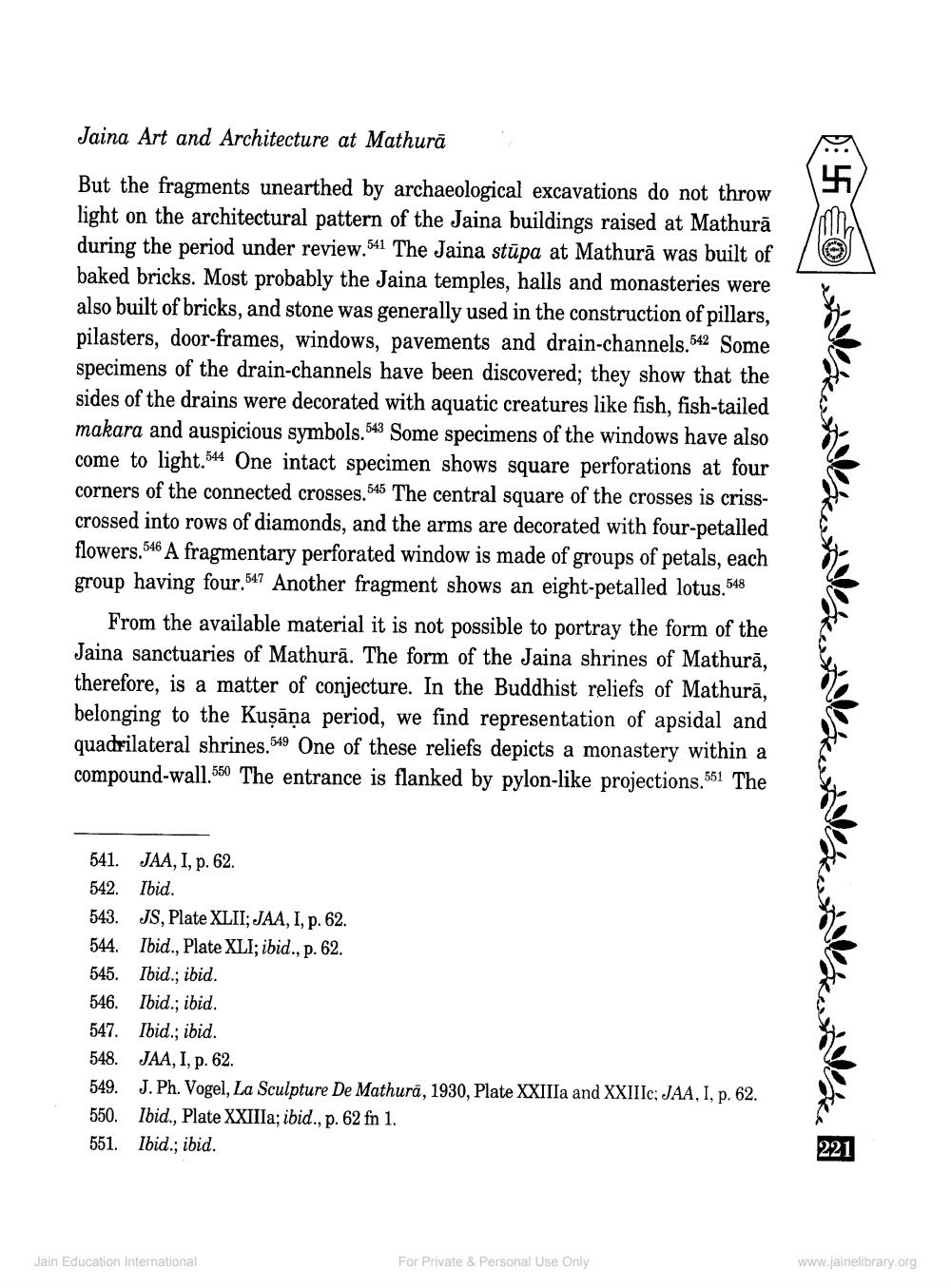________________
Jaina Art and Architecture at Mathurā
But the fragments unearthed by archaeological excavations do not throw light on the architectural pattern of the Jaina buildings raised at Mathurā during the period under review.541 The Jaina stūpa at Mathurā was built of baked bricks. Most probably the Jaina temples, halls and monasteries were also built of bricks, and stone was generally used in the construction of pillars, pilasters, door-frames, windows, pavements and drain-channels.542 Some specimens of the drain-channels have been discovered; they show that the sides of the drains were decorated with aquatic creatures like fish, fish-tailed makara and auspicious symbols.543 Some specimens of the windows have also come to light.544 One intact specimen shows square perforations at four corners of the connected crosses. 545 The central square of the crosses is crisscrossed into rows of diamonds, and the arms are decorated with four-petalled flowers. 546 A fragmentary perforated window is made of groups of petals, each group having four. 547 Another fragment shows an eight-petalled lotus. 548
From the available material it is not possible to portray the form of the Jaina sanctuaries of Mathurā. The form of the Jaina shrines of Mathurā, therefore, is a matter of conjecture. In the Buddhist reliefs of Mathurā, belonging to the Kuşāņa period, we find representation of apsidal and quadrilateral shrines.549 One of these reliefs depicts a monastery within a compound-wall.550 The entrance is flanked by pylon-like projections.551 The
541. JAA, I, p. 62. 542. Ibid. 543. JS, Plate XLII; JAA, I, p. 62. 544. Ibid., Plate XLI; ibid., p. 62. 545. Ibid.; ibid. 546. Ibid., ibid. 547. Ibid., ibid. 548. JAA, I, p. 62. 549.J. Ph. Vogel, La Sculpture De Mathurā, 1930, Plate XXIIIa and XXIII; JAA, I, p. 62. 550. Ibid., Plate XXIIIa; ibid., p. 62 fn 1. 551. Ibid., ibid.
For Private & Personal Use Only
Jain Education International
www.jainelibrary.org




